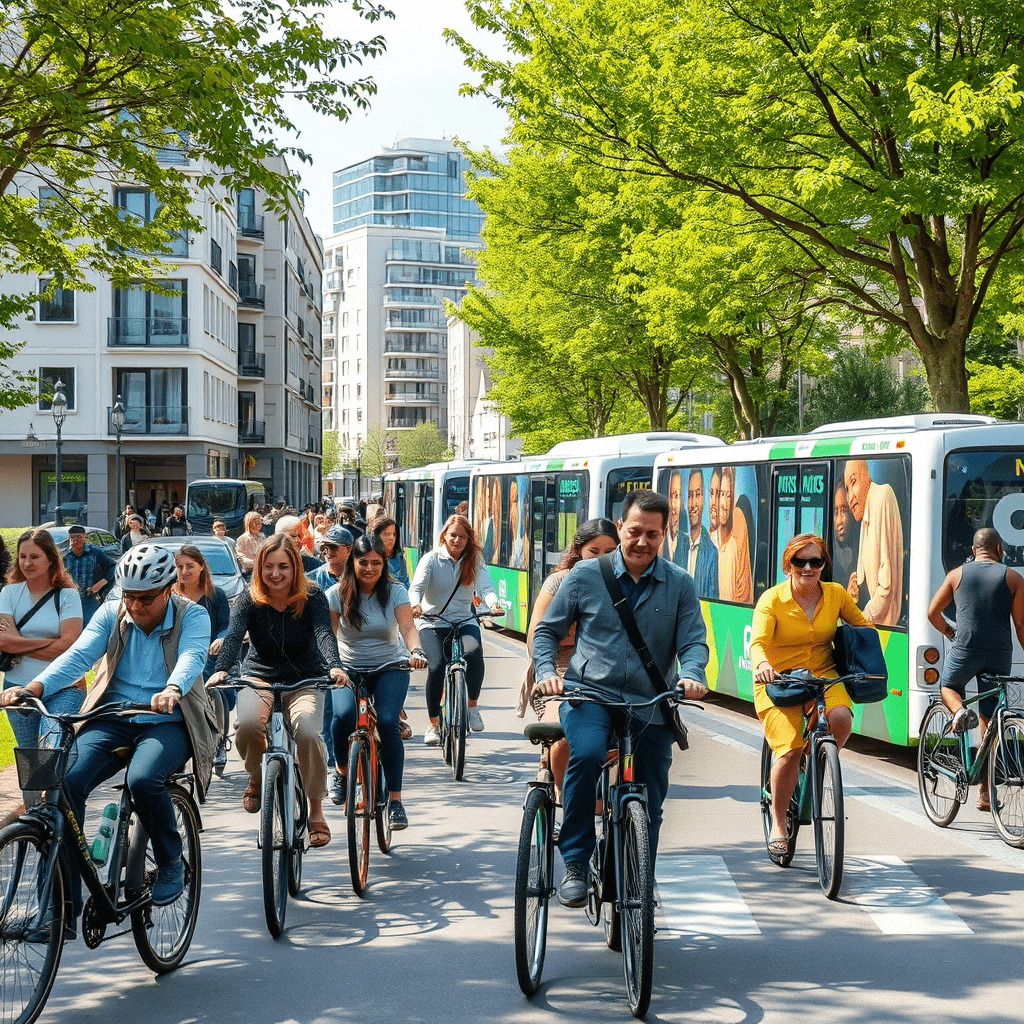The 2025 IESE Cities in Motion (CIMI) index reaffirms European cities as global leaders in urban dynamism, sustainability, and innovation. Evaluating 183 cities across 92 countries, the index assesses performance based on nine critical dimensions: human capital, social cohesion, economy, governance, environment, mobility and transportation, urban planning, international profile, and technology. European cities dominate the top ranks, showcasing their ability to blend economic vitality with environmental stewardship and social inclusivity. However, each city faces unique challenges in achieving holistic sustainability. Below, we explore the standout performances of top-ranked European cities, their sustainability initiatives, and the hurdles they must overcome to shape a greener, more equitable future.
London: A Global Powerhouse with Sustainability Ambitions
For the third consecutive year, London claims the top spot globally and in Europe, excelling in human capital, governance, urban planning, and international influence. Home to world-class universities, cultural landmarks, and a sophisticated public transit network, London remains a beacon of urban excellence. Yet, its sustainability journey is complex, balancing global leadership with local challenges.
Sustainability Highlights:
- Mobility and Transport: London’s commitment to sustainable mobility shines through its Ultra Low Emission Zone (ULEZ), expanded cycling infrastructure, and a growing fleet of electric buses. The city aims to achieve net-zero emissions from transport by 2030.
- Urban Planning: The Thames Tideway Tunnel, a £4.5 billion project, is set to drastically reduce sewage pollution in the River Thames, enhancing environmental quality.
- Green Innovation: London’s “Green City Fund” supports startups developing clean technologies, fostering a circular economy.
Challenges:
- Social Cohesion: Rising income inequality and a housing affordability crisis, with average home prices exceeding £700,000, strain London’s social fabric.
- Environment: Air quality remains a concern, particularly in outer boroughs, where particulate matter levels often exceed WHO guidelines.
- Economic Disparities: Small businesses face challenges competing in a high-cost environment, impacting local economic diversity.
To maintain its leadership, London must address these issues through equitable policies and accelerated environmental action.
Paris: A Vision for a Greener, Walkable Future
Paris ranks second in Western Europe and third globally, driven by its cultural influence, robust human capital, and innovative urban planning. The French capital’s ambitious sustainability goals aim to redefine urban living, but environmental and social challenges persist.
Sustainability Highlights:
- 15-Minute City Concept: Paris’s pioneering “15-Minute City” initiative ensures residents can access work, education, and services within a short walk or bike ride, reducing car dependency and emissions.
- Renewable Energy: Investments in solar farms and geothermal district heating systems support Paris’s goal of carbon neutrality by 2050.
- Public Spaces: The transformation of the Champs-Élysées into a pedestrian-friendly, green corridor exemplifies Paris’s commitment to livable urban design.
Challenges:
- Air Pollution: Despite progress, Paris struggles with high levels of nitrogen dioxide, particularly during peak traffic periods.
- Housing Shortages: A lack of affordable housing fuels gentrification, displacing lower-income residents to the city’s periphery.
- Waste Management: Paris generates over 2.5 million tons of waste annually, and inefficiencies in recycling systems hinder circular economy goals.
Paris’s bold vision positions it as a global leader, but sustained investment and inclusive policies are critical to its success.
Berlin: A Hub of Governance and Technological Innovation
Berlin, ranking third in Western Europe and fifth globally, earns praise for its transparent governance and cutting-edge technology. The German capital’s vibrant startup ecosystem and progressive policies make it a model for smart cities, though economic constraints pose risks to its sustainability agenda.
Sustainability Highlights:
- Energiewende Leadership: Berlin drives Germany’s energy transition with over 30% of its electricity sourced from renewables, including wind and solar.
- Smart City Solutions: Initiatives like smart traffic management and digital citizen platforms enhance efficiency and engagement.
- Green Building Standards: Berlin mandates energy-efficient designs in new constructions, reducing the city’s carbon footprint.
Challenges:
- Economic Performance: Berlin’s GDP growth lags behind other European capitals, limiting funds for large-scale green projects.
- Housing Affordability: Rapid gentrification has driven rent increases of over 20% in the past five years, threatening social diversity.
- Public Transport Capacity: Aging infrastructure and overcrowding on key lines challenge Berlin’s mobility goals.
By fostering economic growth and addressing housing inequities, Berlin can solidify its position as a sustainable urban leader.
Copenhagen and Oslo: Trailblazers in Green Urban Living
Copenhagen and Oslo rank among the top 10 globally, setting the standard for sustainability through bold policies and community-driven initiatives.
Copenhagen:
- Carbon Neutrality by 2025: Copenhagen is on track to become the world’s first carbon-neutral capital, powered by offshore wind farms, district heating, and a cycling culture where 62% of residents commute by bike.
- Urban Design Excellence: Green roofs, urban wetlands, and pedestrian-friendly zones integrate nature into city life, enhancing biodiversity and resilience.
- Circular Economy: The city’s “Resource and Waste Plan” diverts 70% of waste from landfills through recycling and incineration for energy.
Oslo:
- Electric Mobility Leader: With over 70% of new car sales being electric or hybrid, Oslo is a global pioneer in zero-emission transport, supported by extensive charging infrastructure.
- Climate Budget: Oslo’s innovative “Climate Budget” integrates emissions targets into municipal planning, cutting emissions by 50% since 1990.
- Green Spaces: Investments in urban forests and fjord restoration projects bolster biodiversity and resident well-being.
Both cities demonstrate how visionary leadership and public buy-in can drive transformative change, though rising living costs remain a concern.
Edinburgh and Glasgow: Scotland’s Inclusive Innovators
Edinburgh and Glasgow, often overshadowed by larger capitals, shine for their commitment to social inclusion, cultural preservation, and environmental stewardship.
Edinburgh:
- Sustainable Tourism: Leveraging its UNESCO World Heritage status, Edinburgh promotes low-impact tourism through initiatives like carbon-neutral festivals.
- Social Equity Programs: Investments in education and anti-poverty initiatives reduce inequality, with a goal to halve child poverty by 2030.
- Green Infrastructure: The city’s “2050 City Vision” prioritizes green corridors and renewable energy, aiming for net-zero emissions by 2030.
Glasgow:
- Urban Greening: Glasgow’s “Green Glasgow” strategy has created over 100 new parks and green spaces since 2020, boosting biodiversity and mental health.
- Community-Led Sustainability: Grassroots organizations shape policies, ensuring solutions address local needs, from affordable housing to renewable energy co-ops.
- Cultural Inclusion: Glasgow’s diverse arts scene fosters social cohesion, with initiatives supporting minority and marginalized communities.
These Scottish cities prove that smaller urban centers can lead in sustainability and inclusivity through creativity and collaboration.
Emerging Trends and Challenges Across European Cities
The 2025 CIMI index reveals common strengths among European cities: stable governance, advanced public transit, and robust urban planning. However, persistent challenges threaten long-term sustainability:
- Social Inequality: Rising living costs and gentrification exacerbate disparities, risking social unrest.
- Environmental Pressures: Air pollution, waste management, and climate adaptation demand urgent action.
- Economic Resilience: Cities like Berlin and Glasgow need diversified economies to fund green transitions.
To address these, European cities are adopting innovative strategies:
- Collaborative Governance: Partnerships between governments, businesses, and citizens ensure inclusive decision-making.
- Technology Integration: AI-driven traffic systems, energy monitoring, and digital platforms enhance efficiency.
- Circular Economies: Cities are scaling up recycling, upcycling, and waste-to-energy programs to reduce environmental impact.
Lessons for Global Urban Planners
The 2025 CIMI index positions European cities as laboratories for sustainable urban development. Key takeaways include:
- Holistic Planning: Balancing economic, social, and environmental priorities creates resilient cities.
- Community Engagement: Involving residents ensures policies reflect diverse needs.
- Scalable Innovations: Solutions like Copenhagen’s cycling infrastructure or Oslo’s climate budget can inspire cities worldwide.
As global urbanization accelerates, European cities offer a blueprint for building dynamic, inclusive, and sustainable urban futures.
Final Thoughts
The 2025 CIMI index celebrates European cities like London, Paris, Berlin, Copenhagen, Oslo, Edinburgh, and Glasgow for their leadership in sustainability and urban dynamism. From carbon-neutral ambitions to inclusive community initiatives, these cities set a high bar for global urban development. However, challenges like social inequality, air pollution, and economic constraints underscore the need for continued innovation and collaboration. By learning from each other’s successes and addressing their unique hurdles, Europe’s urban centers can pave the way for a greener, more equitable world.
Related Content
- PressReader.com – Digital Newspaper & Magazine Subscriptions
- Common challenges, similar responses: the world’s leading cities converge on strategy | IESE
- China Unveils Jupiter One: World’s Most Powerful Hydrogen Generator Achieves 443.45 Tons Per Hour Capacity
- Fast-Tracking the Guarantee of Origin Scheme for Green Hydrogen and Renewable Electricity
- Climate Change Threatens Carbon Storage Capacity of Boreal Forests After Wildfires: A Swedish Study
- Geneva: A City at the Forefront of Transportation and Ecology
- Integrated Recycling Solutions for Sustainable Lunar Exploration
- Discover Jildent Clinic: Premium Dental Care in Budapest with a Touch of Sustainability
- Japan’s Kyosemi Corporation has unveiled a groundbreaking innovation in solar technology: Sphelar, the first photovoltaic spheres
- Discover the Advantages of Swisscards: Enjoy 1% Cashback and Earn CHF 40 for Every Referred Friend!
- Beyond Clean Energy – How Solar Farms Are Transforming Deserts into Thriving Ecosystems
- Nano-Scale Revolution: How Lab-on-a-Chip Technology is Transforming Environmental Monitoring and Toxicity Testing
- A Norman City in the Top 10 Greenest Cities in France? Which city is the “greenest” in France?
- Ten + 1 Initiatives That Make Valencia the Greenest City in Europe

